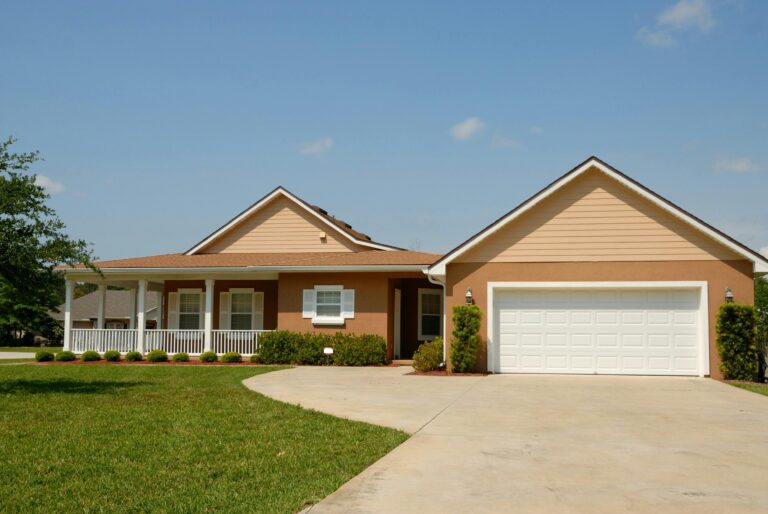
In a housing market defined by high home prices, rising interest rates, and affordability challenges, more buyers and lenders are turning to a longer-term mortgage solution: the 40-year mortgage. Once considered unconventional, this extended loan term is gaining popularity in 2025 as borrowers look for ways to make monthly payments more manageable without sacrificing their dream of homeownership.
But is a 40-year mortgage a smart move—or just a temporary fix? In this article, we’ll break down what 40-year mortgages are, how they work, why they’re becoming more common, and the pros and cons to consider before committing to four decades of debt.
What Is a 40-Year Mortgage?
A 40-year mortgage is a home loan with a repayment term of 40 years, as opposed to the traditional 15- or 30-year options. This longer-term allows borrowers to stretch their payments over a greater number of years, which results in lower monthly payments.
However, the trade-off is that borrowers pay more in interest over the life of the loan and may build equity more slowly.
40-year mortgages are not yet standard in all lending environments and are more commonly offered as non-qualified mortgages (non-QM)—loans that don’t meet certain federal standards like those required for FHA, VA, or conventional loans backed by Fannie Mae and Freddie Mac. That said, in certain refinance or loan modification scenarios, even government-backed mortgages may be extended to 40 years.
Why Are 40-Year Mortgages Trending in 2025?
Several key factors are driving interest in 40-year mortgages this year:
1. Affordability Crisis
Home prices remain historically high in many regions, especially urban centers. Paired with mortgage rates that are still elevated from the rapid increases between 2022–2024, many buyers are being priced out of the market. A 40-year term helps reduce monthly costs and brings more homes into financial reach.
2. Rising Interest Rates
Even small increases in interest rates significantly impact monthly payments. Buyers who might have qualified for a 30-year loan with a lower rate a few years ago may now find that only a 40-year loan keeps their payments manageable.
3. Loan Modifications
For homeowners struggling to keep up with their payments due to income disruptions or life changes, lenders sometimes offer 40-year loan modifications to reduce monthly burdens and avoid foreclosure.
4. Investor and Lender Flexibility
More non-traditional lenders and fintech mortgage platforms are offering flexible loan terms, including 40-year options. This is especially attractive to self-employed buyers, gig workers, or those with non-standard income streams.
How Does a 40-Year Mortgage Work?
Most 40-year mortgages function similarly to a 30-year loan:
-
Fixed-Rate: You lock in one interest rate for the entire 40 years.
-
Adjustable-Rate (ARM): You get a lower initial interest rate for a fixed period (e.g., 5, 7, or 10 years), after which it adjusts annually based on the market.
-
Interest-Only Options: Some 40-year loans are structured so that borrowers only pay interest for the first 5–10 years, after which full principal and interest payments begin. These are riskier, but can be useful for short-term ownership plans.
With each of these structures, the key difference from a 30-year mortgage is longer amortization, meaning each monthly payment includes less principal and stretches the repayment period over four decades.
Pros of a 40-Year Mortgage
✅ Lower Monthly Payments
The biggest appeal of a 40-year mortgage is affordability. Stretching your loan over 40 years means smaller monthly payments, which can help you qualify for a larger home or provide more room in your budget for other expenses.
✅ Increased Buying Power
Lower monthly payments mean you may qualify for a larger loan amount, allowing you to buy a home that would otherwise be out of reach on a 30-year loan.
✅ Better Cash Flow
Homeowners with long-term goals—such as investing, starting a business, or saving for college—may benefit from the monthly breathing room a 40-year mortgage provides.
✅ Customization
Some lenders offer flexible terms, including hybrid 40-year loans with adjustable rates or interest-only options, allowing for further customization based on the buyer’s needs and plans.
Cons of a 40-Year Mortgage
❌ More Interest Paid Over Time
A longer term means more interest accrues over the life of the loan. Over 40 years, you could pay tens of thousands of dollars more in interest compared to a 30-year mortgage.
❌ Slower Equity Building
Because more of your early payments go toward interest, it takes longer to build home equity. This can be a disadvantage if you plan to sell or refinance within a few years.
❌ Limited Lender Availability
Not all lenders offer 40-year mortgages. Those that do may charge higher interest rates or offer less favorable terms, especially if the loan is categorized as a non-QM product.
❌ Resale and Refinancing Risks
If you plan to move or refinance, a 40-year mortgage can be less flexible, especially if you haven’t built much equity. In a declining market, this could lead to issues with negative equity or difficulty qualifying for better terms.
Is a 40-Year Mortgage Right for You?
The 40-year mortgage isn’t for everyone. Here’s when it might make sense:
-
You need the lowest possible monthly payment to afford a home in your desired location.
-
You plan to stay in the home long-term and aren’t concerned about equity in the short term.
-
You’re a first-time buyer or have a limited income and need a stepping stone into the housing market.
-
You plan to pay extra toward the principal when your income grows, effectively shortening the loan term.
On the other hand, it may not be the right choice if:
-
You want to build equity quickly.
-
You plan to sell or refinance within a few years.
-
You’re already stretching your budget to afford the home—even with a 40-year term.
Tips Before Choosing a 40-Year Mortgage
-
Run the Numbers: Compare the total cost of a 40-year mortgage versus a 30-year option. Online mortgage calculators or a consultation with a lender can help you visualize the long-term costs.
-
Understand the Fine Print: Ask about whether the loan is fixed or adjustable, whether it includes prepayment penalties, and what the interest-only terms (if any) look like.
-
Shop Around: Not all lenders offer 40-year terms. Compare at least 2–3 lenders and ensure you’re getting the best rate and lowest fees possible.
-
Have an Exit Plan: If you’re using a 40-year loan as a temporary solution, make sure you have a strategy for refinancing or paying down the loan sooner.

Final Thoughts on the 40-Year Mortgage
The 40-year mortgage is emerging as a compelling option in today’s real estate market. It can make homeownership more accessible, especially in a high-rate, high-price environment. However, it comes with trade-offs—mainly the higher total cost over time and slower equity growth.
For the right buyer, a 40-year loan can be a smart stepping stone or a path to financial flexibility. But like any financial tool, it works best when paired with a clear plan and long-term strategy.
Before signing on the dotted line, take time to understand the implications and consult with a trusted mortgage advisor. Homeownership is a major commitment, and the right loan can make all the difference.





